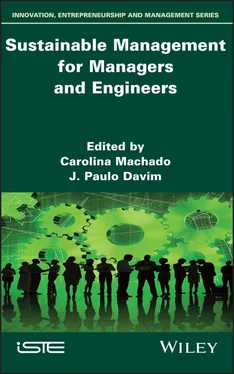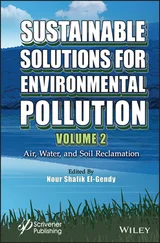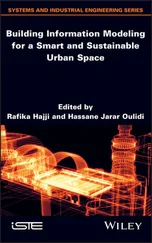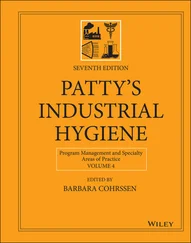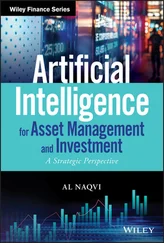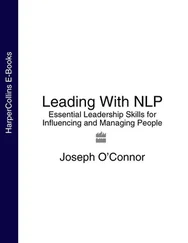In other words, in order to be used by academics, researchers, human resources managers, managers, engineers, and other professionals in related matters, this book looks to:
– share knowledge about sustainable management through debate and information exchange;
– find out how organizations around the world are defining and implementing their sustainable management strategies;
– keep at the forefront of innovative theories and the latest research activity related to sustainable management;
– participate in an international, interdisciplinary exchange of information, ideas and opinions about the new challenges and changes in the sustainable management field.
The editors acknowledge their gratitude to ISTE-Wiley for this opportunity and for their professional support. Finally, we would like to thank all the chapter authors for their interest and availability to work on this project.
Carolina Feliciana MACHADO
Braga, Portugal
J. Paulo DAVIM
Aveiro, Portugal
September 2020
1
Choice Architecture: Nudging for Sustainable Behavior
Sustainable management demands an in-depth understanding of current global economic, social and environmental pressures. This chapter deals with the use of choice architecture and its potential to influence decision-making. It focuses primarily on the discussion of how nudges influence choice, their applications to design interventions to promote behavioral change, and the challenges and ethical concerns to individuals’ freedom of choice.
1.1. Choice architecture and nudging
1.1.1. Choice architecture
People are becoming more concerned about the impact of their choices and are increasingly motivated to engage in sustainable behavior. Being environmentally sensitive in consumption, making healthy choices, and changing troublesome habits are critical to individual and societal well-being.
Choice architecture refers to the context or environment in which people make choices. Behavioral science has come to realize that the way in which options are presented can have a significant impact on the option that is chosen, and that small changes in the decision environment may influence the decision-making process.
People make countless choices in daily life, including decisions on how to use money, time, effort and attention. As individuals face a wide range of possible choices, have limited cognitive resources, and need quick decisions, they use heuristics to facilitate routine choices. Heuristics are shortcuts or rules of thumb that simplify and facilitate decisions. They are not bad per se but do not always produce the best outcomes. Frequently, they produce systematic biases in thinking and judgment that generate expected mistakes and postponement of complex decisions. For instance, in terms of formal logic, having more options should always be better than having fewer options. Nevertheless, due to limitations of time, attention and self-control, individuals often feel overloaded when given too many options. They may perceive having more options as worse than having fewer options, when, rationally, adding more options should always be better. Indeed, people do not have time, motivation, or attention to carefully and consciously think about every decision. For instance, research has shown that we make more than 200 daily food-related decisions [WAN 07]. In general, habits and impulses govern our decisions without awareness. Nudging overcomes this problem by recognizing that choice architecture has a huge impact on the decision-making process and that small changes in that process may generate better outcomes. Small changes, such as organizing the way the food is displayed in cafeterias, where healthy food is made more visible, contribute to healthier choices.
1.1.2. Nudging: using choice architecture for good
Nudges are changes in the choice architecture or in the design of the choice environment that facilitate better decision-making without affecting the freedom of choice. Coined by Thaler and Sunstein [THA 08], the term gained immediate worldwide notability when Thaler was awarded the 2017 Nobel Prize in Economics.
Nudges are nearly imperceptible premeditated changes in the choice environment that influence the chosen option. A nudge does not regulate, sanction, or ban certain choices. Rather, it simply emphasizes particular options and moves individuals’ choices onto a more sustainable track. A nudge is a slight change in the way options are presented, enhancing the best option without removing the other set of options to promote the best interest of the individual. Techniques that can be used to encourage or discourage certain behaviors range from a cue to boost individual self-interest to an incentive to avoid self-defeating behavior. Most people want to make better choices but routinely persist in making poor choices, by default, or because they are seemingly easier. By defaulting or facilitating better choices without restricting individuals’ freedom of choice, it is possible to promote sustainable behavior and improve individual and social welfare.
One example of a breakthrough use of nudging is organ donation policy design. Organ donation saves lives, but donations are scarce around the world when compared with waiting lists. For instance, in the US, according to the Health Resources and Services Administration (HRSA) 1 , approximately 20 people die each day waiting for an organ transplant, and more than 112,000 people needed an organ donation in March 2020. In general, research has shown that more people support organ donation than are actually registered to donate [JOH 03]. Based on this knowledge, in recent decades, many countries have changed their human organ transplant systems from explicit-consent to presumed-consent systems. Instead of an explicit opt-in organ donation system that requires the individual to express their consent to become a potential donor, many countries have moved to an explicit opt-out system where consent is presumed unless the individual explicitly refuses to become a potential donor. Countries such as Austria, Belgium, the Czech Republic, Finland, France, Greece, Hungary, Israel, Italy, Luxembourg, Norway, Poland, Portugal, Slovenia, Spain, Sweden and Turkey have significantly increased their organ donation rates by changing the default status from explicit to presumed consent [JOH 03, UGU 15].
Neutrality is a key feature of nudging incentives, which means that all options should remain easily available at no relevant cost or effort to the participant. Nudges are neutral because the entire set of options is still available (individuals can still choose whether or not they want to be a donor), and individuals can opt-out of the nudge “incentive” without difficulty or relevant cost. However, in practice, nudging may strongly influence the decision-making process and, consequently, the final outcome.
Singapore, Israel and Chile went even further in organ donation policies by establishing an allocation priority clause for donors [ZÚÑ 15]. This clause states that if a person opts out of the donation system, he or she will lose priority if they need an organ donation in the future. While priority for donors is part of policy design, it is not classified as nudging because it is not neutral, and therefore, there is a clear advantage for those who are donors and a sanction against those who are not. To be classified as a nudge, the intervention cannot change incentives significantly.
Moreover, all organizations that use nudging should be transparent about why they aim to influence choices. For example, when organ donation default is altered from explicit consent to presumed consent, the purpose of the change is clearly to increase organ donation. This begs the question of whether transparent nudges are effective. If people understand that they are being nudged, they might deliberately choose to deviate from the suggested choice. However, evidence has shown that nudges can be transparent yet effective [BRU 18, SUN 16]. Transparency is key to making nudging policies ethically acceptable. For example, being aware that organ donation policies have been designed to increase donations does not discourage people from donating. It has been an effective policy and has saved lives.
Читать дальше
